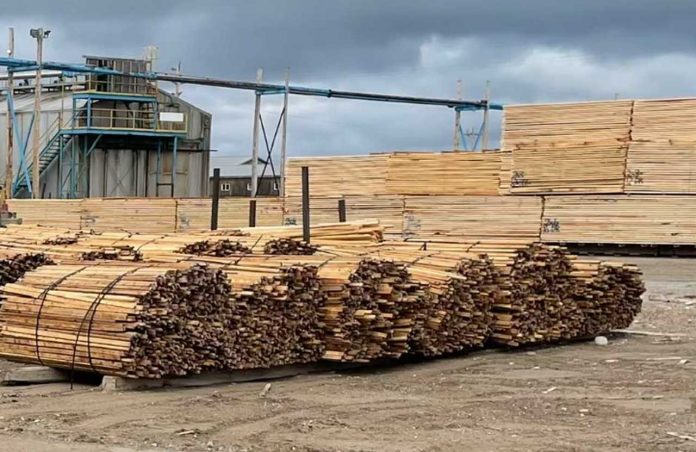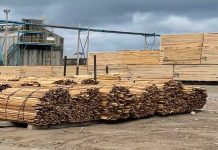Expanding Horizons in Construction and Forestry
TORONTO – NEWS – Ontario is setting a new precedent in construction and environmental sustainability by embracing mass timber technology. This innovative step not only aims to streamline homebuilding but also boosts the province’s forestry sector, ensuring job creation across various industries.
Building Upwards with Mass Timber
In a significant code update, Ontario plans to amend its Building Code, allowing Encapsulated Mass Timber Construction (EMTC) buildings to soar up to 18 storeys—6 storeys higher than the current limit.
This change, heralded by Paul Calandra, Minister of Municipal Affairs and Housing, promises faster construction times, reduced costs, and a thriving northern economy, marking a progressive shift towards increasing the housing supply through cutting-edge methods.
The Environmental and Economic Promise of EMTC
EMTC is praised for its eco-friendly construction process, offering a quieter, quicker, and comparably safe alternative to traditional building methods. Ontario’s Forest Sector Strategy supports this shift towards factory-based, offsite construction, utilizing renewable forestry resources.
This method not only expedites the construction process but also promotes sustainability by leveraging locally sourced materials.
“Modern building techniques, including mass timber and modular construction, are part of our multi-pronged approach to boost housing supply and make homes more affordable. Our government will continue to execute comprehensive housing initiatives that include smarter planning, less red tape, housing-enabling infrastructure investments and working with our partners to unlock the potential of high-speed homebuilding technologies to create sustainable communities for everyone,” says Rob Flack, Associate Minister of Housing
Northern Communities and the Forestry Sector: A Synergistic Growth
Graydon Smith, Minister of Natural Resources and Forestry, highlights the dual benefit of advanced wood construction—it catalyzes housing supply growth while fostering economic development in northern communities through the creation of high-quality jobs.
This initiative is a testament to Ontario’s commitment to leveraging its abundant natural resources and skilled labor force for the province-wide benefit.
Stakeholder Engagement and Future Directions
The province’s decision follows extensive national consultations and feedback analysis on Building Code modifications to expand mass timber usage. The outcomes, set to be reported by a Joint Task Group, will guide the implementation of this transformative change.
Investing in Housing and Infrastructure
Complementing the mass timber initiative, Ontario announces substantial investments in housing-enabling infrastructure, including the $1 billion Municipal Housing Infrastructure Program and the significantly expanded Housing-Enabling Water Systems Fund. These investments are designed to accelerate home construction across the province.
Quick Facts and Future Outlook
Ontario’s forestry sector is a major economic engine, generating significant annual revenue and employment. The expansion of mass timber construction is expected to further this contribution, aligning with sustainable building practices and faster construction methodologies.
Industry and Governmental Voices in Unison
Leaders and industry stakeholders, including Rob Flack, Associate Minister of Housing, and Ian Dunn of the OFIA, commend the government’s proactive approach. This consensus underscores the broad support for mass timber construction as a pathway to affordable housing, environmental sustainability, and economic growth across Ontario.
Dunn states, “The Ontario Forest Industries Association (OFIA) applauds the government’s decision to expand the use of advanced wood construction, like mass timber, allowing for buildings up to 18 storeys. This move will not only accelerate home construction and reduce costs but also support forestry, technology, engineering, and manufacturing sectors. Using more wood in construction aligns with Ontario’s Forest Sector Strategy, promoting sustainability and economic growth. This initiative will benefit Ontario’s economy, environment, and communities.”






